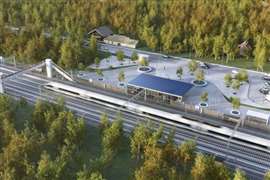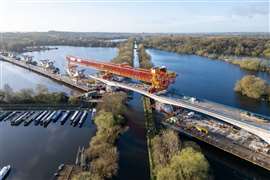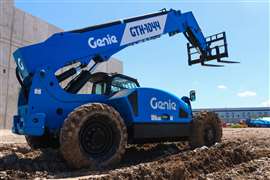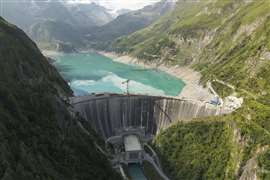Read this article in Français Deutsch Italiano Português Español
Mexico launches two new tenders for US$58bn national rail expansion
28 May 2025
The Mexican government has issued two new tenders for passenger rail corridors (Mexico City–San Luis Potosí and Mexico City–Guadalajara) as part of its broader national railway strategy to deliver more than 3,000km of new passenger lines by 2029.
 Angel de la independencia in Mexico City, Mexico. Image: Adobe Stock
Angel de la independencia in Mexico City, Mexico. Image: Adobe Stock
Procurement is under a design-and-construction contract model, with each line to include construction of passenger stations, double-track electrified rail, maintenance depots, and integration with existing infrastructure in and around Mexico City.
Each corridor is expected to serve as a high-capacity intercity route, connecting key urban and industrial hubs across central and northern Mexico.
According to the Secretariat of Infrastructure, Communications and Transport (SICT), both tenders are now open to prequalified firms.
Interested bidders can access full procurement documents, including technical specifications and timelines, via the Compranet system, Mexico’s official electronic tendering platform.
Mexico’s grand train plan: US$58bn in national investment
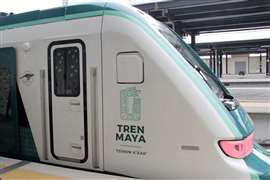 A new Tren Maya train arrives at a station in Mexico. Image: Adobe Stock
A new Tren Maya train arrives at a station in Mexico. Image: Adobe Stock
The two new tenders join another pair of new corridor construction projects, which comprises the 3,000km passenger rail expansion.
Among the projects already underway are the AIFA–Pachuca and Mexico City–Querétaro lines, both led by the federal government through military and state-owned operators.
The AIFA–Pachuca Line began construction in March 2025 with delivery expected by Felipe Ángeles Engineers Corps of SEDENA (Secretariat of National Defense). The 64km double-track, electrified corridor will connect Felipe Ángeles International Airport with the city of Pachuca in Hidalgo state. Once complete, operations will handover to state-owned Olmeca-Maya-Mexica Airport and Railway Group. The project carries an estimated cost of $2.4 billion and is scheduled to open in 2027.
The Mexico City–Querétaro Line, now under construction as of April 2025, is also overseen by SEDENA and is expected to be one of the country’s highest-volume intercity corridors. The 225km route will link Mexico City’s Buenavista station to Santiago de Querétaro, with a stop in San Juan del Río. The line will operate one electrified track and is designed to serve up to six million passengers per year. Construction is expected to continue through 2027, with a projected cost of $3.8 billion.
In addition to these central routes, the government’s rolling investment programme also includes near-complete megaprojects such as the Tren Maya, a 1,554km passenger railway across the Yucatán Peninsula, which started consruction in 2020 at an estimated cost of $25 billion, and the Interoceanic Corridor of the Isthmus of Tehuantepec (CIIT), a freight and passenger corridor connecting the Gulf of Mexico to the Pacific Ocean. Construction on CIIT started in 2020, with both freight and passenger services starting in 2023.
Together, these and the upcoming tenders comprise a $58 billion multi-administration public rail investment intended to reshape national mobility, link regional economies, and revive long-distance passenger rail travel across Mexico. Called the “Plan México” rail strategy, its newest iteration was formally launched in January 2025 under President Claudia Sheinbaum, but is a consolidation and expansion of projects initiated under the previous administration of Andrés Manuel López Obrador.
STAY CONNECTED


Receive the information you need when you need it through our world-leading magazines, newsletters and daily briefings.
CONNECT WITH THE TEAM









